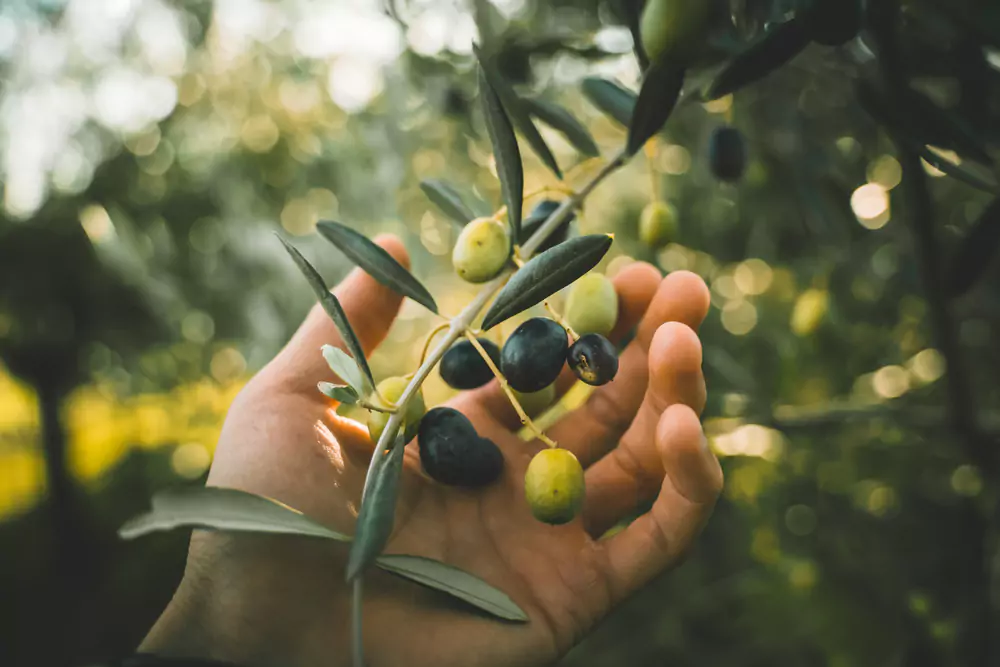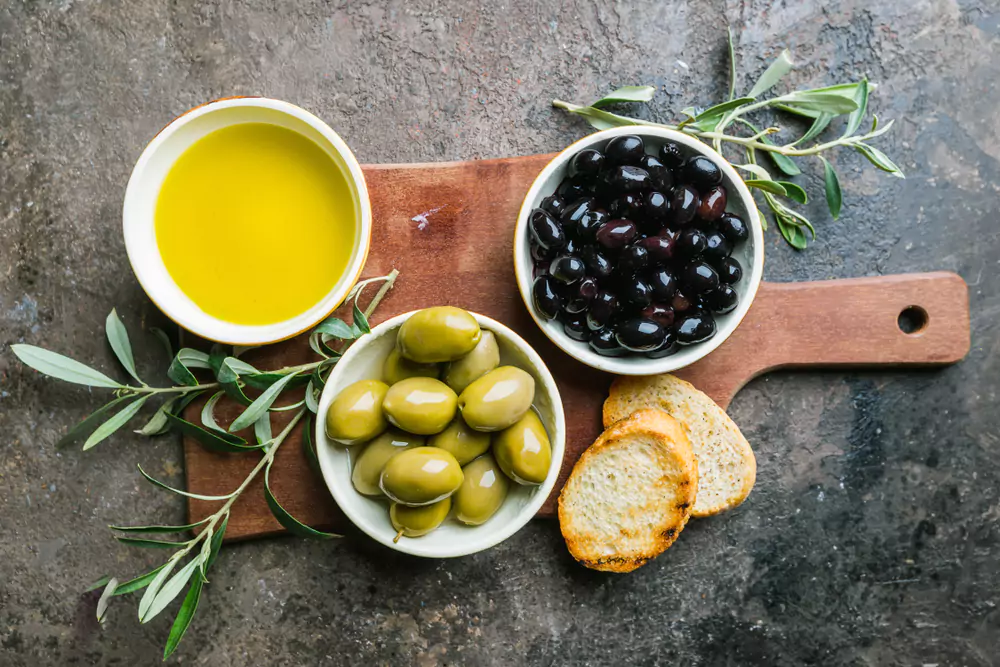The classification of olives as a vegetable or fruit has long been debated among culinary and botany enthusiasts. While some argue that olives are fruits due to their botanical characteristics, others consider them vegetables due to their common usage in savory dishes. In this blog post, we will delve into the intriguing world of olives, exploring their botanical nature, and culinary applications, and settling the age-old question: is olive a vegetable or fruit?
Is Olive A Vegetable Or Fruit?
Why Do Some Think An Olive Is A Vegetable?

Due to its frequent usage in culinary preparations and its inclusion in salads and recipes that call for vegetables, some people could mistakenly believe that an olive is a vegetable. However, an olive is a fruit according to botanical definitions. It is the tiny, oval-shaped fruit of the Oleaceae family’s olive tree (Olea europaea).
Usually, olives are picked when still green and unripe or left on the tree to mature and turn black. The seed is enclosed in a hard pit or stone surrounded by a fleshy outer covering. Despite being a fruit, olives are sometimes called vegetables because of their bitter flavor and widespread use in savory recipes.
Botanical Classification Of Olives
The botanical classification of olives is as follows: they belong to the plant family Oleaceae and the genus Olea. The scientific name for the olive tree is Olea europaea. Olives are evergreen trees or shrubs that can reach a height of up to 15 meters. They have small, opposite leaves that are leathery and lanceolate in shape. The flowers of the olive tree are small and white, giving rise to the fruit known as olives.
Olives are drupes, fruits with a single seed surrounded by a fleshy outer layer. They are typically harvested when they reach their desired level of ripeness and can be consumed in various forms, such as table olives, or used for olive oil production.
What Makes Olives A Fruit?
Olives are typically classified as a fruit; however, due to their savory flavor and culinary use, they are sometimes misidentified as a vegetable. In this brief assessment, we will look at the qualities and categorization of olives as a fruit.

Botanical Classification:
Olives are members of the botanical family Oleaceae, which contains over 600 flowering plants. The olive tree is categorized under this family as the genus Olea and the species Olea europaea. This categorization classifies olives with other fruits, such as cherries, plums, and peaches.
Fruit Structure:
The olive fruit is a drupe, which has an outside fleshy layer (exocarp), a middle pulpy layer (mesocarp), and an interior hard layer around the seed (endocarp). Mangoes, apricots, and peaches are examples of drupes. Depending on the maturity stage, the color of the olive exocarp can range from green to black.
Seed Formation:
A solitary seed or pit is found inside the endocarp of an olive fruit. The mesocarp surrounds this seed and is essential for supplying nutrients to the growing seed. The endocarp shields the source from the environment and guarantees its survival until it may be spread.
Reproduction:
Like other fruits, Olives are created by sexual reproduction in flowering plants. Olive trees bear tiny blooms with both male and female reproductive organs. Pollination happens when pollen from one flower’s male parts reaches the female parts of another bloom, resulting in fertilization and fruit formation.
Nutritional Composition:
Olives, as a fruit, provide a variety of nutritional advantages. They are low in calories but high in healthful monounsaturated fats, which have been shown to improve heart health. Olives are also high in antioxidants, vitamins (including vitamin E), and minerals (including iron and copper). They also include dietary fiber, which promotes digestion.
Why Do Olives Seem Like A Vegetable?

Olives are a bit of fruit used in cooking and as a snack. However, they appear to be classified as a vegetable rather than a fruit. Several elements contribute to this notion, including culinary use, taste, and nutritional properties.
Culinary Usage:
One of the primary reasons olives are often mistaken for vegetables is their widespread usage in savory meals. Salads, pasta dishes, pizzas, and other Mediterranean cuisines regularly include olives. They are frequently packed with things like cheese or peppers. Because of its relationship with these foods, people may mistake olives for a vegetable rather than a fruit.
Taste:
The flavor of olives is another feature that influences their classification as a vegetable. The taste of olives is typically savory, briny, or salty. This flavor profile is more closely related to the flavors associated with vegetables rather than fruits. Fruits are usually linked with sweetness, but olives are more savory and umami in taste.
Nutritional Characteristics:
For nutritional reasons, olives are similar to vegetables. They are low in calories and high in nutrients, including fiber, vitamin E, and monounsaturated fats. These nutritional properties are frequently connected with veggies as opposed to fruits. Furthermore, olives are typically taken in more significant amounts than other fruits, confirming that they resemble vegetables.
Olives Usage In Culinary Contexts
Olives are a versatile culinary component that has been utilized for ages. They are well-known for their particular flavor and are often used in a variety of recipes all over the world. Olives give various meals a distinct flavor and texture, from appetizers to main entrees. The following sections will examine how olives are utilized in multiple culinary situations.
Appetizers and Antipasti:
In Mediterranean cuisine, olives are frequently served as part of appetizer plates or antipasti. Marinade them in olive oil, herbs, and spices to increase the flavor. Olives are usually coupled with cheese, cured meats, and bread to make an excellent and savory appetizer.
Salads and Dressings:
Olives are a popular addition to salads, offering flavor and texture. They may be sliced or diced and put into green salads, pasta salads, or grain-based salads. Olives may also be used to combine dressings with olive oil, vinegar, herbs, and other seasonings.
Pizza and Pasta:
Olives are widely used as a pizza topping and in pasta recipes. They add a sour and salty edge to many recipes, complementing the other flavors. Depending on personal inclination, olives can be chopped or left whole.
Sandwiches and Wraps:
Olives can be sliced or packed and used as a sandwich or wrap filler. They offer a deep flavor and may be paired with various items, including cheese, veggies, and deli meats.
Stews and Braises:
Olives are frequently used to give depth of flavor to stews and braised foods. They can survive prolonged cooking without losing flavor or texture. Olives go well with meats like chicken, lamb, or beef in these robust meals.
Vegetables That Are Fruits
On the basis of the botanical definition, several vegetables fall within the umbrella of the fruit category. A good illustration of this is the tomato, which is frequently mistaken for a vegetable but is actually a fruit. As they grow from a flower’s ovary and contain seeds, cucumbers and zucchini are two more vegetables that fall within the fruit classification. Despite being considered vegetables, these foods are frequently added to salads and savory meals. It is crucial to remember that fruits and vegetables may not always fall under the same botanical categorization as those used in cooking.
Conclusion
In conclusion, the debate over whether olives are a vegetable or fruit has been resolved. Olives are, in fact, a fruit. Although they possess some characteristics commonly associated with vegetables, such as their savory taste and culinary uses, olives are botanically classified as fruits due to their origin from the ovary of a flowering plant. This classification is supported by various authoritative sources, including the United States Department of Agriculture (USDA), the Food and Agriculture Organization (FAO) of the United Nations, and the Oxford English Dictionary. These sources provide clear definitions and explanations confirming olives’ fruit status. Therefore, it can be confidently stated that olives are indeed fruits.
Frequently Asked Question (FAQ’s)
Is An Olive A Vegetable Or A Fruit?
An olive is technically classified as a fruit. While it is commonly mistaken as a vegetable due to its savory taste and culinary uses, olives are botanically classified as fruits.
Why Is An Olive A Fruit?
Olives are considered fruits because they develop from the ovary of the olive tree’s flower after pollination. The ovary undergoes fertilization and transforms into the fruit containing the plant’s seeds.
Do Olives Count As A Vegetable?
Although olives are botanically classified as fruits, they are often treated as vegetables in culinary contexts. This is primarily due to their savory flavor and everyday use in delicious dishes. Olives are commonly used in salads, pasta dishes, pizzas, and Mediterranean cuisines.
What Are The Benefits Of Eating Olives?
The benefits of eating olives include improved heart health and reduced inflammation.
Do Olives Change Colors?
Yes, olives do change colors as they ripen. The color of olives can vary depending on their stage of maturity. Initially, olives are green when they are unripe.
Are Black Olives A Fruit?
No, black olives are not a fruit. They are actually classified as a fruit of the Olea europaea tree, which is commonly known as the olive tree.


![Is Sugarcane A Fruit, Vegetable, Or Grass? [ Answered 2024 ] Is Sugarcane A Fruit](https://juicerhunter.com/wp-content/uploads/2023/10/Is-Sugarcane-A-Fruit-150x150.webp)
![Olive Oil and Lemon Juice - [ Health Benefits & Uses] Olive Oil and Lemon Juice](https://juicerhunter.com/wp-content/uploads/2023/10/Discover-the-benefits-of-olive-oil-and-lemon-juice-150x150.jpg)


